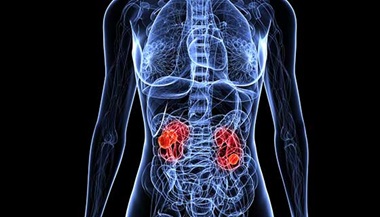Kidney Cancer Ablation
The preferred treatment for localized kidney cancer is surgical removal. However, ablation offers a less invasive option with reasonable results for well-selected patients. Ablation involves destroying the cancer cells within the body, usually without the use of any incisions. The most common forms of ablation are freezing (cryoablation) or burning (microwave or radiofrequency ablation. Ablation is usually performed percutaneously (through the skin) using image guidance, such as computed tomography (CT) imaging. Less commonly it is done under direct vision via surgical exposure (open or laparoscopic surgery).
In percutaneous ablation, an experienced interventional radiologist places a needle through the directly into the tumor. This is done under CT scan or ultrasound guidance to avoid injuring adjacent structures. The ablation machine is then turned on and the tumor is destroyed. At Johns Hopkins, percutaneous ablation is typically an outpatient procedure that does not require general anesthesia.
The major benefit of ablation is avoidance of a major surgical procedure. This may be especially important for those with certain medical issues that make surgery very risky.
The down side of ablation is that the cure rates may not be as high as those for surgery, and multiple ablation treatments may be required. In addition, not all tumors are suitable for ablation, and thus a discussion with a kidney cancer expert regarding all options is always best.





